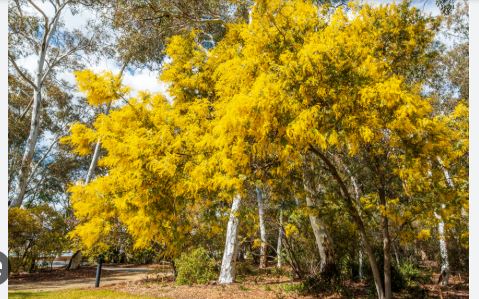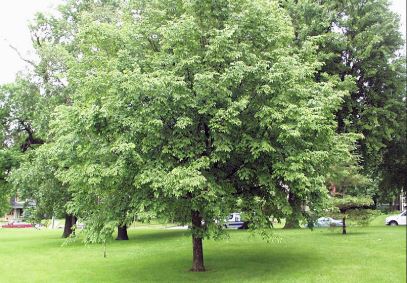
Native Australian trees are iconic elements of the continent’s diverse landscapes, ranging from arid deserts to lush rainforests. Renowned for their resilience, they adapt to extreme climates, including drought, fire, and poor soils. These trees are vital to ecosystems, supporting wildlife and contributing to cultural heritage.
Many feature vibrant flowers, aromatic leaves, or unique bark, making them prized for ornamental use. Their blooms, often in shades of red, yellow, or white, attract birds, bees, and butterflies, enhancing biodiversity. Some produce edible fruits or seeds, historically used by Indigenous communities for food and tools.
These trees thrive in varied conditions, with most preferring full sun and well-drained soil. Some tolerate wet or saline environments, while others excel in sandy or rocky soils. Their adaptability makes them ideal for sustainable landscaping, from urban parks to coastal gardens.
Used for shade, screening, or as focal points, these trees offer ecological and aesthetic benefits. Their deep roots stabilize soil, and their canopies provide habitat. Careful selection ensures compatibility with local climates, creating vibrant, wildlife-friendly spaces with minimal maintenance.

Native Australian Trees
Eucalyptus (Gum Tree, Eucalyptus spp.)
Eucalypts, with over 800 species, are Australia’s most iconic trees, known for peeling bark, aromatic leaves, and colorful flowers. Growing 20–100 feet, they thrive in Zones 8–11, preferring full sun and well-drained soil. Found from alpine snow gums to river red gums, they support koalas and birds but shed litter. Ideal for shade or screening, they’re fast-growing but need space due to invasive roots.
Golden Wattle (Acacia pycnantha)
Australia’s national floral emblem, this small tree (15–25 feet) bursts with fragrant yellow flower balls in late winter to spring. Hardy in Zones 8–11, it grows fast in full sun and well-drained soil but has a short lifespan (7–12 years). It attracts bees and birds and suits small gardens or pots, though some acacias are weedy in non-native areas.
Banksia (Banksia spp.)
Banksias, with over 170 species, grow 15–40 feet, featuring serrated leaves and yellow, orange, or red flower spikes that turn into woody cones. Hardy in Zones 8–10, they prefer sandy, acidic soil and full sun. Autumn-winter blooms attract birds and bees, making them ideal for coastal gardens or as focal points.
Bottlebrush (Callistemon spp.)
These trees, growing 10–25 feet, display vivid red, pink, or white brush-like flowers in spring and summer. Hardy in Zones 8–11, they tolerate drought, frost, and damp soils, thriving in full sun. Their nectar-rich blooms attract birds, making them perfect for hedges or feature trees in low-maintenance gardens.
Waratah (Telopea speciosissima)
A striking tree or shrub (10–20 feet), the Waratah boasts large, bright red flower heads in spring, sometimes white or pink. Native to New South Wales, it’s hardy in Zones 8–10, preferring subtropical climates, full sun, and well-drained soil. Its bold blooms make it a stunning standalone tree, attracting birds.
Flame Tree (Brachychiton acerifolius)
Known for fiery red flowers covering leafless branches in spring, this deciduous tree grows 30–50 feet. Hardy in Zones 9–11, it thrives in full sun and well-drained soil. Its glossy, lobed leaves and bird-attracting blooms suit large gardens or streets, though leaf drop requires cleanup.
Black She-oak (Allocasuarina littoralis)
This evergreen tree, reaching 15–50 feet, has needle-like foliage and red spring flowers. Hardy in Zones 8–11, it tolerates frost, drought, and various soils (except soggy) in full sun. Its conifer-like look and wildlife support make it great for screening or coastal planting, but avoid near structures due to roots.
Lemon-Scented Gum (Corymbia citriodora)
A tall eucalypt (50–100 feet), it features smooth, white bark and lemon-scented leaves. Hardy in Zones 8–11, it thrives in full sun and well-drained soil, tolerating drought. Its airy canopy suits large spaces or streetscapes, but avoid small yards due to size and litter. Birds and bees love its white flowers.
Illawarra Plum (Podocarpus elatus)
This rainforest tree (20–40 feet) produces edible, dark purple plums and glossy green leaves. Hardy in Zones 9–11, it prefers moist, well-drained soil and full sun to part shade. Ideal for hedging or shade, its fruit attracts birds, and it’s suited to coastal gardens.
Grevillea (Grevillea robusta)
Known as Silky Oak, this tree (40–60 feet) bears golden-orange flowers in spring. Hardy in Zones 9–11, it loves full sun and well-drained, acidic soil. Its fern-like foliage and nectar-rich blooms attract birds, making it ideal for large gardens, though its sawdust can irritate skin.
Paperbark (Melaleuca spp.)
Growing 15–50 feet, paperbarks have peeling, papery bark and white, pink, or red flowers in spring. Hardy in Zones 8–11, they thrive in full sun and tolerate wet or dry soils. Their dense foliage suits screening or shade, and nectar attracts birds and bees.
Finger Lime (Citrus australasica)
A small tree (10–20 feet), it yields tangy, caviar-like fruit and white flowers. Hardy in Zones 9–11, it prefers frost-free, well-drained soil and full sun. Slow-growing, it’s great for pots or edible gardens, with fruit used in cuisine and blooms attracting pollinators.
Red Flowering Gum (Corymbia ficifolia)
This compact eucalypt (15–30 feet) dazzles with red, pink, or orange flowers in summer. Hardy in Zones 9–11, it thrives in full sun and well-drained soil. Its vibrant blooms attract birds, making it ideal for small gardens or streetscapes, though it needs space for roots.
Sydney Red Gum (Angophora costata)
Growing 50–100 feet, this tree has smooth, pinkish bark and white spring flowers. Hardy in Zones 9–11, it prefers full sun and well-drained soil. Its twisted limbs and bird-attracting blooms suit large parks or coastal landscapes, but its size limits use in small spaces.
Queensland Bottle Tree (Brachychiton rupestris)
This semi-deciduous tree, growing 30–60 feet, features a distinctive bottle-shaped trunk and clusters of creamy-yellow flowers in spring. Native to Queensland, it’s hardy in Zones 9–11 and thrives in full sun and well-drained soil. Its drought tolerance and sculptural form make it ideal for xeriscape gardens or as a focal point, attracting birds.
Snow-in-Summer (Melaleuca linariifolia)
A small evergreen tree (15–30 feet), it produces fluffy white flower clusters in summer, resembling snow. Hardy in Zones 8–11, it tolerates wet or dry soils and thrives in full sun. Its compact size and nectar-rich blooms, attracting bees and birds, suit small gardens, hedges, or coastal areas.
Coolibah (Eucalyptus coolabah)
This eucalypt, growing 30–50 feet, has rough bark, silvery leaves, and white flowers in summer. Native to inland Australia, it’s hardy in Zones 8–11 and prefers full sun and well-drained soil. Its shade and bird-attracting blooms make it ideal for rural or large landscapes, though it sheds bark and leaves.
Macadamia (Macadamia integrifolia)
A rainforest tree (20–40 feet), it yields edible nuts and creamy-white flower racemes in spring. Hardy in Zones 9–11, it thrives in full sun to part shade and moist, well-drained soil. Perfect for edible gardens or shade, its nuts are a delicacy, and blooms attract pollinators, though it’s slow-growing.
Coastal Banksia (Banksia integrifolia)
Growing 20–50 feet, this evergreen tree features yellow flower spikes in autumn-winter and leathery leaves. Hardy in Zones 8–10, it prefers sandy, well-drained soil and full sun. Its bird-attracting blooms and salt tolerance make it ideal for coastal gardens or as a screen.
Kurrajong (Brachychiton populneus)
This semi-deciduous tree (20–50 feet) has glossy, lobed leaves and creamy, bell-shaped flowers in summer. Hardy in Zones 8–11, it tolerates drought and various soils in full sun. Its dense canopy suits shade or windbreaks, with seeds historically used by Indigenous Australians after processing.
Native Frangipani (Hymenosporum flavum)
A slender tree (15–40 feet), it bears fragrant, yellow-white flowers in spring, tinged purple when young. Hardy in Zones 9–11, it prefers full sun to part shade and well-drained soil. Its lush foliage and pollinator-friendly blooms make it perfect for small gardens or courtyards.
Tuckeroo (Cupaniopsis anacardioides)
This evergreen tree (20–35 feet) produces greenish-yellow flowers and orange fruit capsules in summer. Hardy in Zones 9–11, it thrives in full sun and tolerates salt and drought. Its rounded canopy and bird-attracting fruit suit coastal or urban landscapes, ideal for shade or streets.
Blue Quandong (Elaeocarpus angustifolius)
Growing 30–80 feet, this rainforest tree has glossy leaves and brilliant blue fruit following white flowers. Hardy in Zones 9–11, it prefers moist, well-drained soil and full sun to part shade. Its fruit attracts birds, making it ideal for large gardens, though it’s slow-growing.
Lilly Pilly (Syzygium smithii)
A versatile evergreen (15–50 feet), it bears white flowers in summer and edible, pink-purple berries. Hardy in Zones 9–11, it thrives in full sun to part shade and moist soil. Perfect for hedges, shade, or edible gardens, its berries and blooms support birds and bees.
Brush Box (Lophostemon confertus)
This evergreen tree (30–60 feet) has creamy flowers in spring and glossy, oval leaves. Hardy in Zones 9–11, it tolerates drought and various soils in full sun. Its dense canopy suits streetscapes or shade, with flowers attracting pollinators, though it drops seed capsules.
Swamp Mahogany (Eucalyptus robusta)
Growing 50–80 feet, this eucalypt has rough bark, broad leaves, and white flowers in autumn. Hardy in Zones 8–11, it thrives in full sun and tolerates wet or saline soils. Its bird-attracting blooms and sturdy form suit coastal or large landscapes, but it sheds litter.
Wollemi Pine (Wollemia nobilis)
A rare conifer (25–80 feet), it has soft, fern-like foliage and small cones. Hardy in Zones 8–10, it prefers part shade and well-drained, acidic soil. Rediscovered in 1994, it’s ideal for shaded gardens or as a specimen, supporting conservation efforts with its unique aesthetic.
Yellow Box (Eucalyptus melliodora)
This eucalypt (30–100 feet) features honey-scented white flowers and smooth, mottled bark. Hardy in Zones 8–11, it thrives in full sun and well-drained soil. Its nectar-rich blooms attract bees, ideal for large landscapes or apiaries, though it requires space for roots.